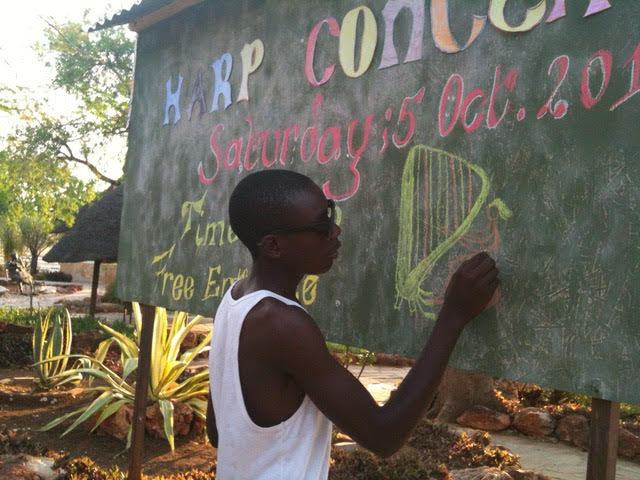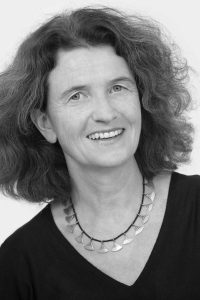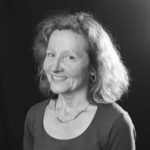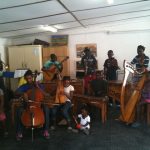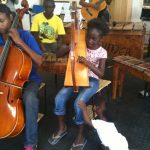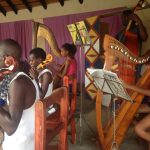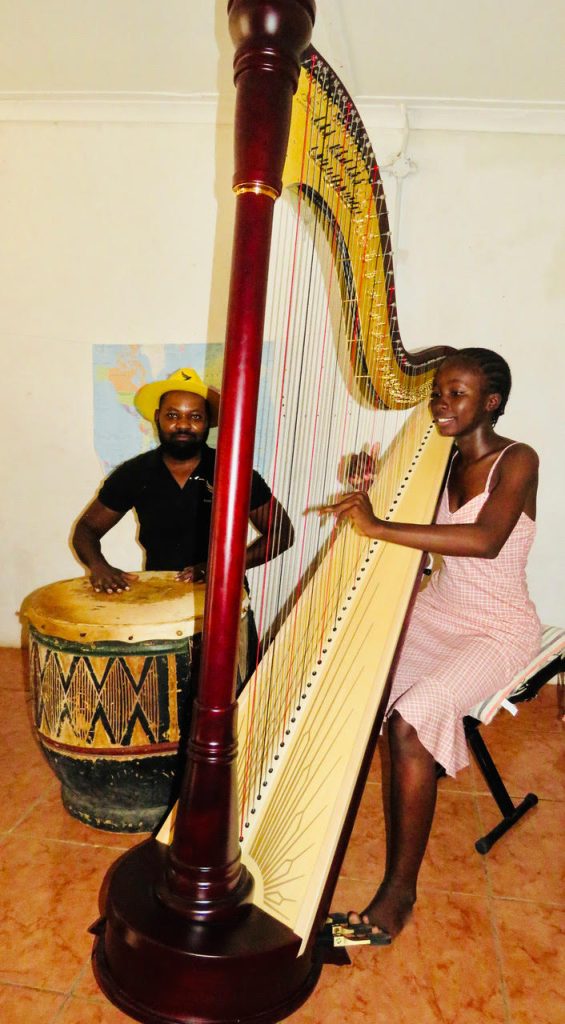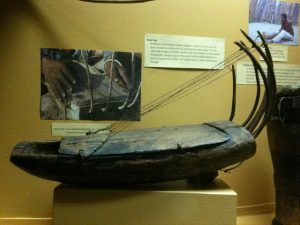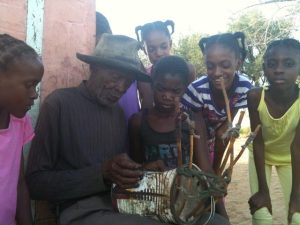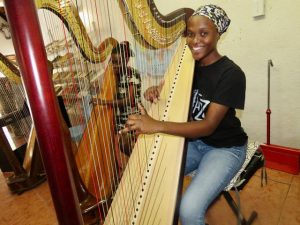Camac Blog
A harp for the Arts Performance Centre Tsumeb
Latest
March 15, 2023
The Arts Performance Center (APC) in Tsumeb, Namibia is founder Lis Hidber’s third such centre, supporting children and young adults to develop themselves and their prospects through the arts. 30 teachers and 10 support staff work with up to 300 students daily, studying music, visual arts, crafts, drama, dance and languages. It is committed to equipping its students with employable skills: engaging them later as teachers, supporting them to set up their own music or other arts schools, or seeing them secure positions in Namibian military bands, to give just three examples. Without state support, the APC currently relies mostly on donations.
In 2011, Swiss harpist Nicola Hanck was seeking to experience another culture and way of life – ideally, working with children and with music. Because Lis Hidber is herself an amateur harpist, the APC featured a harp class, and this is how Nicola discovered it.
She travelled to Namibia to work with the children and staff, the latter themselves mostly self-taught. “I initially went for two weeks, and immediately found myself completely immersed in deep work”, Nicola remembers. “It was such an intense experience, maybe of the kind where you either give it up straight away, or you can’t let it go. I soon went back on the maximum tourist visa for a three-month stay, and repeatedly thereafter until the pandemic.
What struck me most from the very beginning was not so much how we enjoyed making music, which seems to me to be a shared feeling pretty much anywhere in the world. It was what the students associate with music: they see it as a road to new possibilities. The children come daily and they practise like crazy, whenever the instruments are free. As a harp teacher, I almost never had to say anything twice; everything I said was absorbed very quickly. The teaching happens in groups, and if one child has trouble the other children jump in to help them. These were all things that stood out for me. Of course, the talented students do need additional input, beyond learning auto-didactically and then passing it on to the others. In addition to visits from volunteers like myself, we were able to raise funds for some string players to take part in the youth orchestra of the Menuhin Festival Gstaad.
- A group of APC students
- APC students
- In orchestra in Namibia
As for the Égérie concert harp: because Lis is a harpist herself, she had acquired harps for the APC. Some were older instruments, donated by friends – Xenia Schindler is another colleague who sent a harp, and also went out there twice to teach. Over time, the harps just got to the point where they weren’t really playable any more, and anyway there’s no technician in Namibia.
Jakez François had already donated a Camac lever harp in 2013 – spontaneously, nobody had asked him for it! I think he either discovered the APC, or it’s possible I wrote to him about it. But one day, this harp just arrived at the centre. It’s still the best lever harp there. Xenia and I got to thinking about how good it would be if we could give the APC a really decent concert harp. The point is that the students need to earn money with their music: for the school, which is not currently state-funded, and for themselves. I think it’s important to speak very openly about this topic because it is a really big issue, and it’s why we have given them an Égérie.
With this harp, the students have many opportunities to give concerts. Because there’s no conservatoire, no orchestra and no university in Namibia – although there is an amazing gospel choir tradition – there’s a lot of opportunities for the APC musicians to be engaged. The beautiful instrument gives them more chances, and I also see it as a visible testimony to their hard work and success.
Another nice detail, that perhaps contributes to the harp’s success in the APC, is that Namibia also has a traditional harp. It’s difficult to get hold of traditional harp players these days – I did meet one in the desert, but I couldn’t persuade him to come down to the centre! Most young people seem want to learn the modern harp, but certainly there is a connection there. The children are also very charmed by the sound of the harp, and I’d say that’s the case wherever you are in the world. You can access something beautiful and rewarding even from your very first notes.”
If you’d like to find out more about the APC and their work, you can follow Lis Hidber’s blog, which she has maintained for over ten years and is a fascinating document of the life and evolution of the centre. Many thanks also to Nicola Hanck for the photos!
- Jennifer with the Égerie concert harp

